Login
Subscribeimmunology

A Genetic Predisposition to Vitamin D Deficiency Contributes to Severe COVID-19
Iris Kulbatski, PhD | Jun 1, 2023 | 3 min read
Ana Teresa Freitas discussed how individual variation in vitamin D synthesis and metabolism influences susceptibility to upper respiratory viruses.
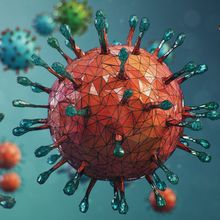
Vaccines: Sex Matters
Niki Spahich, PhD | Jun 1, 2023 | 3 min read
Male patients who recover from mild COVID-19 have baseline immune states primed to mount stronger responses to future challenges than female patients.

Traditional Techniques, New Applications
The Scientist’s Creative Services Team | 1 min read
Researchers harness the power of familiar methods to advance science.
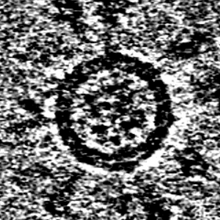
New Technology Improves SARS-CoV-2 mRNA Vaccine-Induced Immune Responses
Elina Kadriu | May 30, 2023 | 3 min read
mRNA-encoded self-assembling enveloped virus-like particles presenting SARS-CoV-2 spike protein enhance immunity and may provide better protection against viral variants.

Connecting the Dots That Link Diabetes and Infection Severity
Deanna MacNeil, PhD | May 22, 2023 | 4 min read
Researchers shed light on the immunometabolism of respiratory infection, providing an avenue towards safer COVID-19 therapeutics for those affected by metabolic disorders.

Relevant Models Reflect Real-World Needs
The Scientist’s Creative Services Team | 1 min read
Jie Sun shares how his curiosity, creativity, and motivation to address clinical public health needs steer his research in immunology and infectious disease.
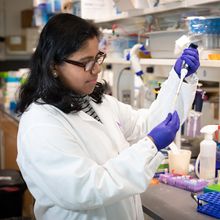
Chek-Mate for Gliomas
Aparna Nathan, PhD | May 22, 2023 | 3 min read
New research may make immunotherapy possible for hard-to-treat brain tumors.

Resolving Discrepancies in Mouse and Human Autoimmunity Studies
Niki Spahich, PhD | May 15, 2023 | 4 min read
By editing primary T cells with CRISPR, researchers begin to settle a long-standing debate about a common autoimmunity risk variant.
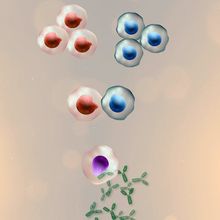
Understanding Hybridoma Technology for Monoclonal Antibody Production
Alpana Mohta, MD | 5 min read
By fusing antibody-producing cells with immortal myeloma cells, researchers produce reliable supplies of highly specific antibodies.

A Bacterial Culprit for Rheumatoid Arthritis
Hannah Thomasy, PhD, Drug Discovery News | Apr 27, 2023 | 4 min read
Scientists identified a species of Subdoligranulum that may drive disease.
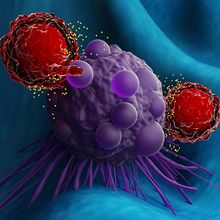
Helping Engineered T Cells Find Their Way to Tumors
Nele Haelterman, PhD | Apr 18, 2023 | 3 min read
Susan Thomas discusses how her team engineered a microfluidic device to screen for T cells with improved homing capability to tumor cells.

The Scientist’s Journal Club: Immunology
The Scientist’s Creative Services Team | 1 min read
Scientists present the latest research on the immune response against SARS-CoV-2, the influence of COVID-19 on future vaccine responses, and drivers of T cell development.
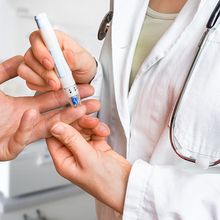
An Implantable Device for Type 1 Diabetes Treatment
Elina Kadriu | Apr 18, 2023 | 3 min read
Engineering of a novel device to treat T1D, featuring local immunosuppression and a vascularized cell reservoir to prolong islet cell survival.

Immune Molecule Alters Cellular Makeup of Human Brain Organoids
Charles Q. Choi, Spectrum | Apr 17, 2023 | 4 min read
The changes may help explain the link between maternal infection and autism, though more research is needed.
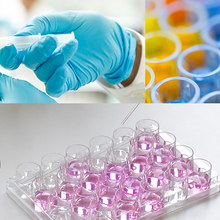
Emergent Recombinant Proteins in Clinical Diagnostics
Scripps Laboratories | 1 min read
A new era of reliable recombinant proteins makes it possible for researchers to replace tissue-derived biomarkers in a variety of diagnostic assays.
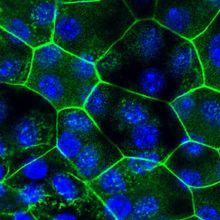
Bladder ‘Memory’ Influences Urinary Tract Infection Recurrence in Mice
Alejandra Manjarrez, PhD | Apr 12, 2023 | 3 min read
Urinary tract infections leave permanent epigenetic marks in the mouse bladder epithelium, reprogramming its response to subsequent infections, a study finds.
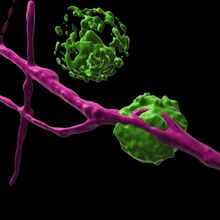
How Cells in the Skin Team Up To Fight Pathogens
Rachael Moeller Gorman | Apr 12, 2023 | 4 min read
Immune cells and pain neurons form complex partnerships to protect our bodies from pathogens, new research reveals.
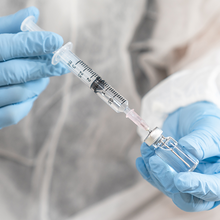
Modulating the Immune Response to Vaccines
The Scientist’s Creative Services Team | 1 min read
Researchers uncover innovative natural approaches to fine-tune immunity from vaccination.
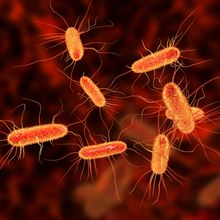
New Synthetic E. coli Is Immune to Bacteriophage Infection
Anna Napolitano, PhD | Mar 30, 2023 | 3 min read
Self-contained synthetic E. coli resistant to viral infection could prove invaluable to the biotechnology industry by increasing product consistency and reducing safety concerns.
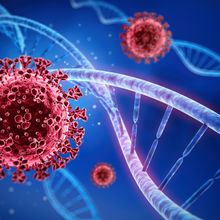
COVID-19 Infections May Reshape Genetic Landscape
Holly Barker, PhD | Mar 30, 2023 | 3 min read
SARS-CoV-2 infection triggers structural changes in the host cell’s DNA, which provide a molecular explanation for long COVID, a new study suggests.